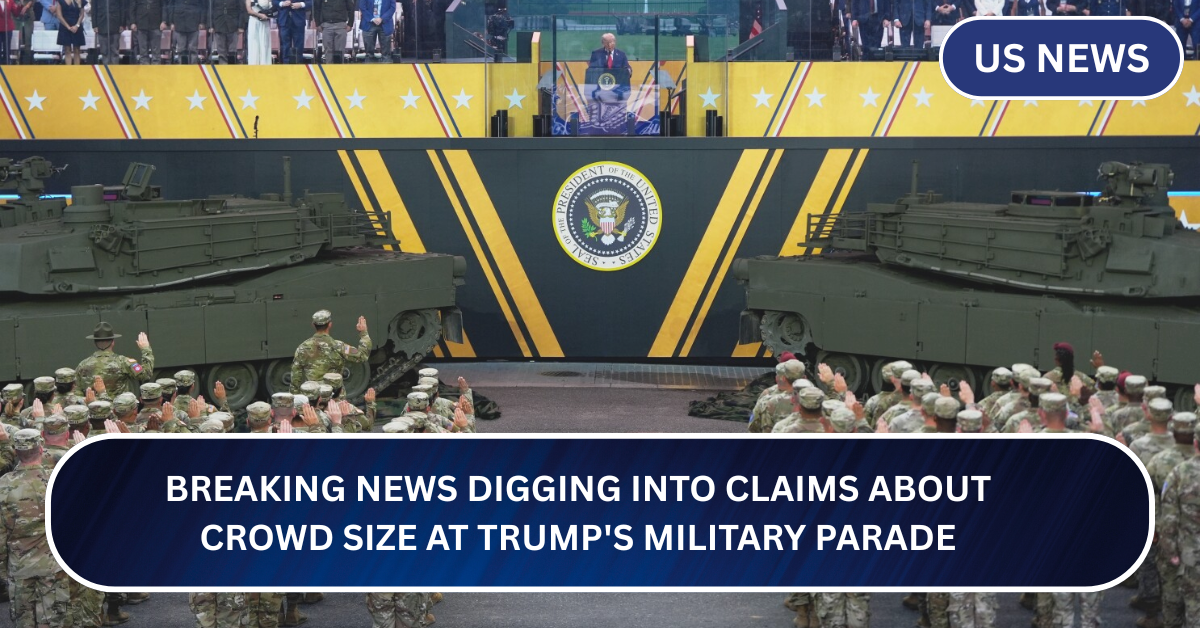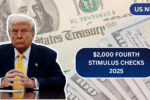Former President Donald Trump’s military-themed parade, held recently as part of his campaign efforts, has stirred up yet another round of controversy — this time about the size of the crowd in attendance. Supporters claim it was a massive show of support, while critics and observers say the actual turnout was far smaller than what was presented on social media.
The debate over crowd sizes isn’t new when it comes to Trump. His first presidential inauguration in 2017 sparked similar discussions, and now, years later, it seems the argument has returned — this time centered around a flashy, patriotic display involving tanks, troops, and air shows.
What Was the Parade About?
The event was organized as a patriotic military-style parade, showcasing American armed forces, flyovers by fighter jets, and speeches focused on strength and unity. It was framed as a tribute to the military, but many saw it as a political rally meant to energize Trump’s base ahead of the 2024 elections.
Held in a major U.S. city (exact location varied depending on reports), the parade drew thousands — though how many exactly is where things get tricky.
Different Crowd Estimates Raise Questions
Videos and images from Trump allies showed large crowds lining the streets, cheering with flags and signs. Some headlines claimed tens of thousands attended. Trump himself, during his speech, said the turnout was “historic.”
However, local reporters, independent journalists, and fact-checkers say the actual number appeared far smaller. Some drone footage posted online shows half-empty sections and minimal foot traffic in certain areas. Crowd experts, including those who’ve analyzed attendance at past political events, estimate the crowd was likely in the low thousands, not the tens of thousands as claimed.
One city official, speaking anonymously, stated, “The turnout was decent, but it didn’t match what we’ve seen for major sports events or city festivals. There’s a gap between online claims and what we saw on the ground.”
The Role of Social Media in Shaping Perceptions
Supporters of Trump flooded social platforms with carefully framed photos and videos, avoiding empty spots and focusing only on tight crowd shots. Meanwhile, critics posted contrasting visuals, showing the thinner attendance from wider angles.
This once again highlights how easily public perception can be influenced depending on the source. Many online users pointed out how both sides seemed to be shaping the narrative to suit their agendas.
The hashtag #TrumpParadeTruth started trending on X (formerly Twitter), with users comparing and analyzing visuals to determine which side was being more honest.
Why Crowd Size Still Matters in Politics
To an average voter, how many people attend a political event may not seem that important. But in politics, perception often matters more than facts.
Large crowds are seen as a sign of momentum, influence, and popularity. For Trump, who has always used crowd size as a symbol of strength, a strong turnout supports his message that he still has deep public backing.
This is why the debate becomes so intense — both sides know that the visual story being told can shape public opinion, media coverage, and voter enthusiasm.
Fact-Checkers Step In
Several major news outlets and fact-checking organizations have released side-by-side image comparisons and on-the-ground reports. While none of them deny that the parade had a strong presence of supporters, they argue that the “record-breaking” or “historic” size claims are not backed by clear evidence.
One fact-checking group stated: “The parade was well-attended, but there’s no proof of numbers reaching beyond 5,000 to 8,000 based on spatial analysis and aerial views.”
Trump’s History With Crowd Controversies
This isn’t the first time Trump has clashed with media and officials over attendance numbers. In 2017, the dispute over his inauguration crowd led to days of headlines and even a press conference by then-White House Press Secretary Sean Spicer.
Experts say these moments are more than ego battles — they often become part of larger political narratives around truth, media bias, and public support.
Final Thoughts
While the Trump military parade was visually powerful and certainly drew a passionate group of attendees, the debate around its size is yet another example of how political events in today’s media age are about more than just policy or speeches — they’re about controlling the story.




